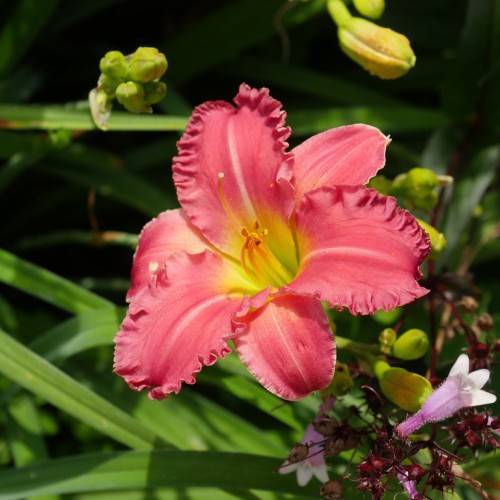
daylily
Hemerocallis 'Rosy Returns'
Cycle:
Herbaceous Perennial
Watering:
Average
Hardiness Zone:
3 - 9
Flowers:
Flowers
Sun:
Full sun,part shade
Leaf:
Yes
Growth Rate:
Low
Maintenance:
Low
Drought Tolerant:
Yes
Salt Tolerant:
Yes
Care Level:
Medium
watering
Daylilies do best when watered regularly, but do not need to be overwatered. They should be watered at the root level - not from above - 1 to 2 times a week or when the soil feels dry to the touch. Overwatering can cause poor bloom production and excess foliage growth. Too much water can also cause root rot. For established daylilies, less frequent watering is acceptable as the plant's roots will be more established and can access water more efficiently. Allow the soil to dry completely before re-watering. When watering, ensure that the plant receives at least 1 inch of water per week.
sunlight
Daylily (Hemerocallis 'Rosy Returns') needs at least 4 to 6 hours of direct sunlight each day to thrive. However, too much intense sunlight can cause the foliage to scorch, so it's best to look for locations that provide a combination of sunlight and shade. The most ideal locations would receive bright sunlight in the morning and some afternoon shade in the afternoon. For peak bloom production, orient the plant so that it receives maximum sunlight throughout the day.
pruning
Daylilies (Hemerocallis 'Rosy Returns') should be pruned each spring and, if desired, lightly in early or midsummer. Pruning in spring should be extensive: the plant should be cut back to a height of 6-8 inches above the ground. This encourages healthy, strong growth of new foliage and flowers. Pruning in summer should be more selective: remove any dead, damaged, or withered stems, as well as healthy stems if desired. Deadheading will help encourage new flower buds.
